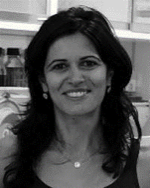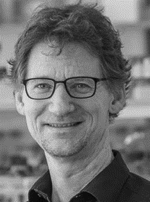Life depends on the ability to adapt to changing environmental conditions. To meet this demand, organisms are equipped with sophisticated mechanisms to regulate protein function in time and space. Disentangling the mechanisms that control this functional plasticity of biological processes at the molecular and supramolecular levels is at the heart of fundamental biological research and understanding of diseases. The complex membrane networks have a fundamental function in spatially organizing metabolic pathways and many other cellular processes. There is compelling evidence that the composition and collective properties of the lipids in each organelle play critical roles in defining organelle identity and the specific functions of its proteome.
Organelle-specific membrane properties governed by the lipid composition directly control membrane protein functions via intricate, highly interconnected mechanistic principles. These include (i) specific interactions with membrane lipids, (ii) the effect of bilayer thickness and lipid packing on the structural organization of membranes, and (iii) the crosstalk of proteins and lipids in determining membrane surface properties and shape. The specific regulatory functions of organellar membranes are further controlled by lateral segregation of membrane components and by membrane curvature. Moreover, membrane proteins and lipids segregate at contact sites formed between distinct organelles, or pathogens and host organelles during infection. Such spatial organization of membrane components occurs at the nanometer scale and during different stages of cell growth, or in response to stressors or nutritional changes.
Our research initiative aims to address how the systems properties of membranes control the plasticity of membrane protein functions and how functionally relevant membrane properties are maintained and adapted in response to distinct environmental cues. We seek to define the mechanisms underlying such functional plasticity at membranes in various physiological and pathophysiological processes. We will follow a multiscale approach to study how functional plasticity is encoded by cellular membrane networks from the molecular and sub-cellular up to the organismic level. The consortium will develop and apply lipid tools and biomolecular mass spectrometry to map the protein and lipid landscapes at the (sub)organellar level, use light and electron microscopy to resolve the organization and dynamics of membrane networks, and structural biology approaches to elucidate membrane protein function and plasticity within their natural lipid environment.
Our projects will provide insights into the physiological adaptation of membrane properties and their dysregulation in diseases caused by defects in lipid metabolism, or membrane protein assembly, targeting, or function, or by microbial infections.
SFB 1557
Project summaries
















Project P1 (Caroline Barisch)
“Remodelling and exploitation of the host lipid trafficking machinery by pathogenic mycobacteria”
This project will exploit Dictyostelium infected with mycobacteria that are proficient or defective in the secretion of bacterial effectors. The goal is to investigate how these pathogens reprogram metabolic lipid flows and consequently impact on the functional plasticity of the mycobacteria-containing vacuole (MCV) membrane composition. This includes a systematic search for novel components of the host lipid trafficking machinery, their effects on MCV function and their role in mycobacterial intracellular growth.
Project P2 (Kerstin Bartscherer)
“Formation, composition and role of extracellular vesicles in the ischemic heart”
This project takes advantage of an ischemia models in mice (Mus) and the highly regenerative spiny mice (Acomys) to ask how a specific population of extracellular vesicles (EV) at the plasma membrane of cardiac fibroblasts is formed and how these vesicles affect the activity of other cardiac cells. The project will analyze the EV composition their injury induced changes as well as their uptake and cardioprotective and/or angiogenic capacity in target cells.

Project P3 (Maria Bohnert)
“Plasticity of cellular lipid handling machineries in metabolic adaptation”
This project takes a broad approach to identify principles controlling the functional plasticity of lipid exchange at membrane contact sites, including lipid droplets, with a primary focus on sterols and storage lipids. Based on a microscopy-based screen, the dynamic membrane localization of lipid handling factors will be analyzed under different metabolic conditions. Targeting and metabolic control of factors such as the DAG acyltransferase Dga1 will be analyzed in detail to understand their metabolic control and ER-membrane localization.
Project P5 (Katia Cosentino)
“Plasticity of GSDM pores for the control of pyroptotic cell death“
This project will analyze the regulatory mechanisms by which pore formation by Gasdermins at the plasma membrane results in pyroptosis, an inflammatory form of regulated cell death. The project will unravel how membrane properties regulate Gasdermin recruitment to subcellular membranes and pore formation, and how the protein activity is altered by membrane modulators, thus clarifying the functional plasticity of Gasdermin pore formation in pyroptosis.
Project P6 (Florian Fröhlich)
“Plasticity of the serine palmitoyl transferase complex during adaption of sphingolipid metabolism“
This project will focus on a key enzyme in sphingolipid biogenesis, the rate-limiting serine palmitoyltransferase (SPT) enzyme complex. The function of this complex and its regulation by three accessory proteins will be analyzed under different cellular conditions to understand how metabolic sphingolipid fluxes are controlled at the molecular level and to explore their physiological relevance.
Project P7 (Ayelén González Montoro)
“Dissecting the interplay between vacuolar contact site plasticity and sphingolipid homeostasis“
This project will focus on the connection between the plasticity of membrane contact sites at the vacuole and membrane lipid homeostasis. The vacuolar Cvm1 protein forms membrane contact sites between the yeast vacuole and the endoplasmic reticulum, the mitochondria, and the peroxisomes. The project will focus on the molecular architecture of Cvm1 contact sites, determine how these control sphingolipid levels, and uncover their regulation in response to sphingolipid levels.
Project P8 (Michael Hensel)
“Dynamic manipulation of functional plasticity of the host cell endosomal system by an intracellular pathogen“
This project will explore how Salmonella as a facultative intracellular pathogen triggers alterations in the endomembrane system of its host to promote its replication. The project will reveal how Salmonella effector proteins are targeted to endosomal membranes to exploit the functional plasticity of the mammalian endosomal system, with a focus on the lipid composition of Salmonella-containing vacuoles (SCV). This analysis will reveal how Salmonella controls the biogenesis of its intracellular niche.

Project P9 (Joost Holthuis)
“Plasticity and biological relevance of organellar lipid codes“
This project will focus on the functional consequences of and compensatory cellular responses to imbalances in organellar lipid codes caused by pathogenic variants of the sphingomyelin synthase SMS2. How mislocalization of this enzyme affects membrane lipid homeostasis in relation to extracellular vesicle formation by osteogenic cells and the implications in dysregulated bone formation will be addressed in detail.
Project P10 (Daniel Kümmel)
“Adaptation of a Rab/GEF module for initiation and maintenance of planar cell polarity and cilia“
This project will concentrate on the regulation of organelle identity in vesicular trafficking, where a guanine nucleotide exchange factor (GEF) complex involved in planar cell polarity, termed Fuzzy-Inturned, activates the Rab23 GTPase. The project will focus on how structure and function of Fuzzy-Inturned is regulated by interactions with the plasma membrane and the cytoskeleton.
Project P11 (Arne Möller)
“Membrane determinants for ABC transporter plasticity“
This project will analyze the structure, dynamics and function of plasma membrane ABC transporters such as P-glycoprotein and aims to understand how these are regulated by their membrane environment. He will use cryo-electron microscopy to dissect how structural changes depend on lipid composition, curvature and lateral pressure to identify new membrane-encoded determinants of ABC transporter function.
Project P12 (Achim Paululat)
“Plasticity and adaptation of the endocytic membrane compartment in nephrocyte differentiation“
This project will focus on labyrinth channels at the plasma membrane of nephrocytes, about 100 µm large kidney-like cells in Drosophila. These channels are dynamic filtration units with strong endocytic activity. How these structures are formed by membrane proteins and how they are linked to the endolysosomal system remains incompletely understood. The project will address the biology of these structures by focusing on the role of membrane proteins at the channels and their link to the endolysosomal system and the actin cytoskeleton.
Project P13 (Jacob Piehler)
“Regulation of cytokine receptor signaling plasticity by the subcellular membrane context“
This project will focus on class I/II cytokine receptors with important functions in hematopoiesis and immunity. These receptors activate downstream signaling via associated Janus kinases (JAKs). Assembly of cytokine receptor signaling complexes and activation of downstream effectors appear highly regulated by subcellular localization pointing to a key role of the membrane environment. The project will unravel how receptor assembly and effector recruitment is regulated by membrane properties and subcellular localization.
Project P14 (Christian Ungermann)
“Plasticity and adaptation of the endosomal system“
This project will focus on the role of the nutrient and stress regulated peripheral membrane protein complexes, the Fab1/PIKfyve lipid kinase (FAB1C) and the target of rapamycin complex 1 (TORC1), on signaling endosomes (SE). This project will address the functional plasticity of SE membrane composition and thus organelle biogenesis, determine how FAB1C and TORC1 signaling affects SE function, and how these complexes control the fusion and fission machinery the identity of SEs and the endolysosomal system in general.
Project P15 (Roland Wedlich-Söldner)
“Plasticity and adaptation of proton and nutrient transport through lateral segregation of the plasma membrane“
This project will focus on the function of lateral segregation of membrane proteins at the yeast plasma membrane (PM) in the molecular regulation and functional plasticity of proton and nutrient transport systems in their membrane environment. This includes the regulation during acute stress responses and long-term adaptations to metabolic changes. The project will clarify how rapid adaptations of PM domains during acute stress situations such as starvation, heat shock or osmotic shock controls membrane protein function.
Project Z1 (Florian Fröhlich, Joost Holthuis)
“Mass spectrometry, quantitative lipid analyses and lipid tools“
This central project will expand the consortium’s technical capabilities in analyzing lipid function by developing protocols for a rapid and efficient isolation of cellular organelles, establishing workflows for mass spectrometry-based analyses of organellar lipidomes and proteomes, and generating a toolbox of functionalized lipids for monitoring intracellular lipid flows, capturing lipid effector proteins, and manipulating subcellular lipid pools.
Project Z2 (Dovilė Janulienė, Rainer Kurre, Katherina Psathaki)
“High-resolution imaging across spatiotemporal scales“
This project provides a platform for advanced imaging across different spatial and temporal scales to resolve the highly dynamic organization of proteins and lipids within cellular membrane systems. It will establish a platform for high-resolution macromolecular structure determination and time-resolved cryo-EM, implement and further develop advanced light and electron microscopy approaches, and establish lipid imaging at the highest spatiotemporal resolution using novel lipid tools.
Project MGK (Achim Paululat)
Integrated Research Training Group (IRTG)
This IRTG project will complement the experimental training with training in a broader spectrum of subjects and provide opportunities for networking and personal development. The program includes workshops on research methods, seminars on soft skills and networking opportunities through career seminars. All activities are embedded in a structured educational program with an individual development plan (IDP) and a thesis advisory committee (TAC).
Project INF (Susanne Kunis, Michael Hensel, Arne Möller)
“Information infrastructure for the SFB 1557: structured storage, metadata annotation, and analyses of experimental data“
This INF project will further develop the current platforms for image data management and provide data management for additional data formats from proteomics and lipidomics mass spectrometry and flow cytometry. The project will interface the current data management platforms with an electronic lab notebook (ELN) system for demands of SFB 1557 to enable the digitization of instrumental and experimental metadata alongside the data generation in experiments and analyses.
Project OR (Marco Beeken, Katia Cosentino)
“Outreach project of the SFB 1557”
The outreach project will accompany the proposed SFB from an early stage with various innovative formats of science communication. The main aim is to present the central research questions of the SFB, and to explain how basic research in biology is linked to public interests. The project will promote the highly innovative infrastructural and technological portfolio offered by the SFB and the associated CellNanOs research building, which are flagships of the city and can be unique hubs for both research and public education.

